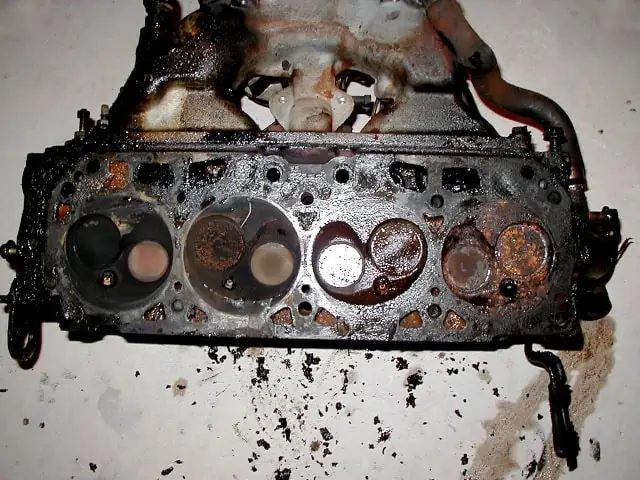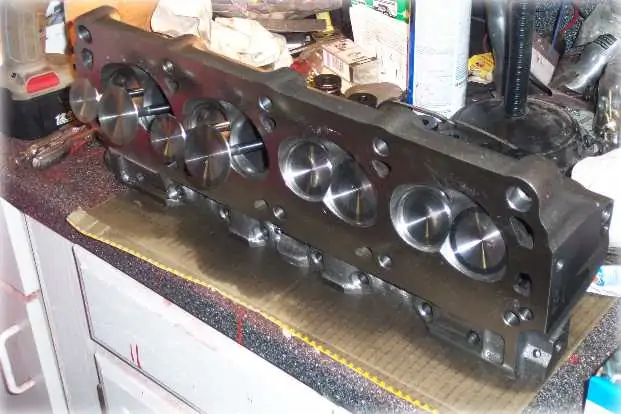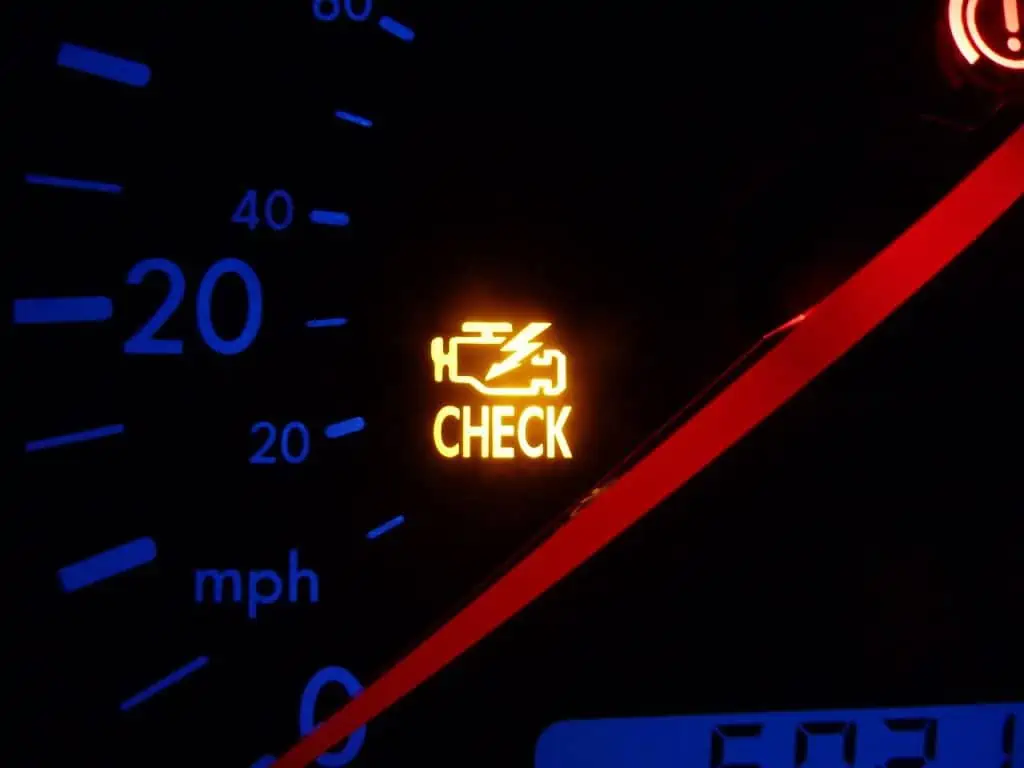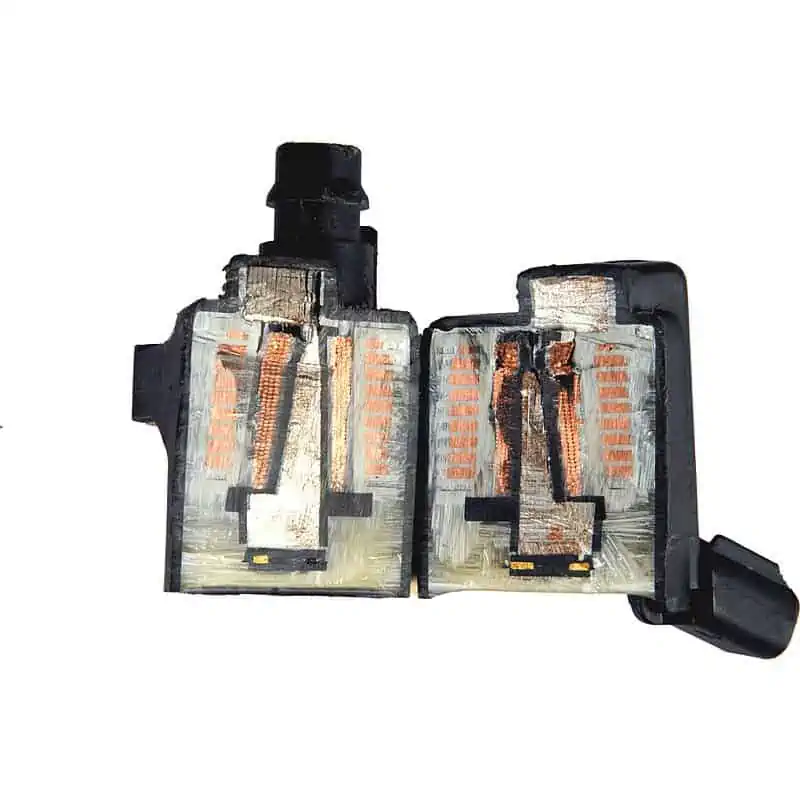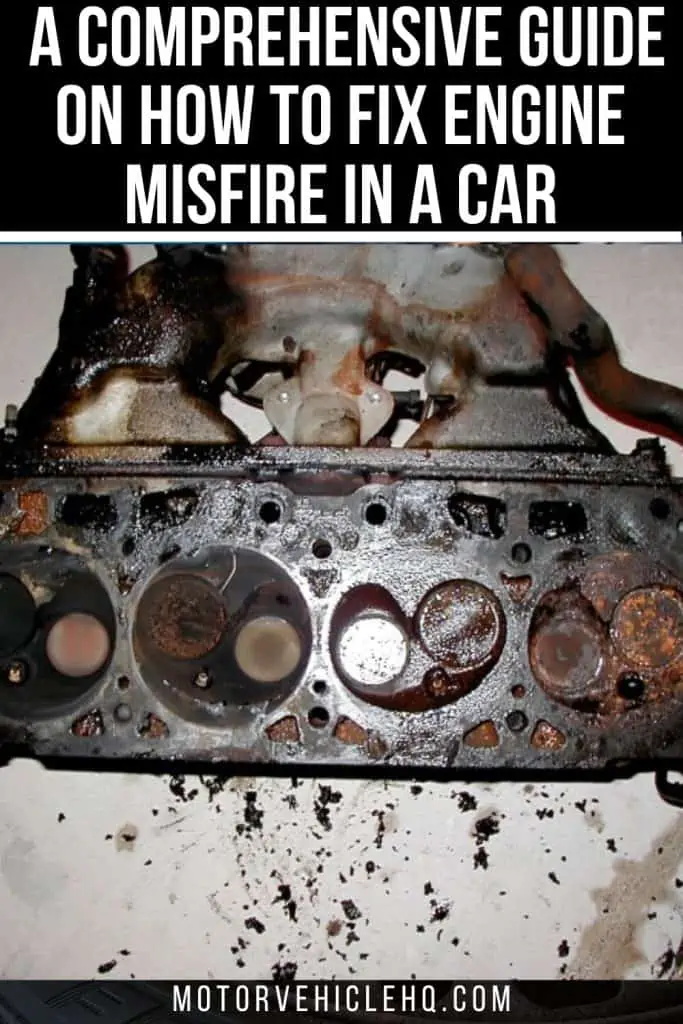A misfire in an engine occurs when one or more cylinders fail to generate power. There are several potential causes, including a fouled spark plug, a clogged fuel injector, or a broken oxygen sensor.
One of the most annoying situations that you want to avoid is an engine misfire. But regrettably, they will eventually happen in every engine for one cause or another.
What does it feel like when an engine misfires? What results in a cylinder misfiring? What signs indicate an engine misfire? Can engine misfires be prevented? And what does it imply for the well-being and safety of your car?
All of these inquiries, as well as how to identify an engine misfire, diagnose it, and correct it, will be addressed.
Identifying and Repairing a Misfiring Engine
Following our discussion of many engine misfiring reasons, I’ll show you how to resolve engine misfire problems. I suggest taking the actions listed below if you are unsure of what caused the misfire.
1. Check the Error Codes
The car computer ought should be able to provide fault codes if a warning light displays as a result of a misfire. The majority of auto repair shops and parts stores have scan tools that can retrieve and decipher the codes for you. There are also inexpensive code readers available, but you must conduct Google searches to learn what the codes indicate.
2. Delving Into the Codes
The meaning of the codes is typically displayed with the fault codes in high-end scan tools. If you have one of those inexpensive scan kits, you might just obtain alphanumeric codes, which you must look up in the OBDII handbook, or enter into a Google search to determine the source of the misfire. Several misfire codes include;
Internal combustion engine by Huhu Uet / CC BY-SA 3.0. An engine misfire happens when one or more cylinders are unable to produce power.
- P0300: Every cylinder Random or erroneous firing
- P0301: Cylinder 1 misfires
- P0302: Cylinder 2 misfires
- P0303: Cylinder 3 misfires
- P0304: Cylinder 4 misfires
- P0305: Cylinder 5 misfires
- P0306: Cylinder 6 misfired. Depending on the number of cylinders, the codes continue in that order.
You can usually identify misfiring cylinders using fault codes. You must rule out any potential causes if you receive a random misfire code. Let’s take a closer look at each potential reason now.
3. Test the Ignition
You should be aware that most misfires are typically caused by ignition issues. It’s a great place to start if your diagnostic tool did not identify ignition as the cause of the misfire. If you have an older vehicle with a distributor, you should check it first.
Remove the distributor cover to inspect the interior for any worn-out or corroded connections and points. If the connectors are the problem, you might want to spend a few dollars replacing the distributor cover. The distributor itself must be replaced, which will cost more, but the repair is simple and cheap.
If your car has an ignition coil, you can quickly identify the offending cylinder (s). When you start your vehicle, pay attention to the sound of the engine. Detach one of the ignition coils and turn off the vehicle after that. Launch the vehicle. The sound of the engine should alter.
If not, you’ve discovered the misfiring cylinder. You must carry out this procedure one at a time until all of the misfiring cylinders are located. This procedure may also be done when the engine is idle, but we don’t advise it since you risk electrocuting yourself.
If a cylinder starts to misfire, switch the ignition coil or cable and run the test again. If the misfiring persists after switching cylinders, your ignition coil or wire may be defective. Replace it and get a new one. However, you must inspect your spark plugs if the misfire only affects one cylinder.
Similar to how you test the ignition coils, you may easily check your spark plugs. Replace the spark plugs in the two cylinders to see if the misfire is limited to that cylinder or if it is caused by the spark plug itself. If the misfire continues, your spark plug is defective.
Purchase fresh plugs and replace them all. The misfire issues have been resolved. Check your intake manifold for leaks if all the cylinders are producing nice sparks but the engine is still misfiring.
4. Look for Leaks In the Intake Manifold
It’s rather simple to identify vacuum leaks around your intake manifold. However, because there is a chance of harm, you must take the appropriate safety measures.
Before beginning this operation, make sure you have a fire extinguisher close at hand in case there is a fire. Start your vehicle, and let it run for a minute or two.
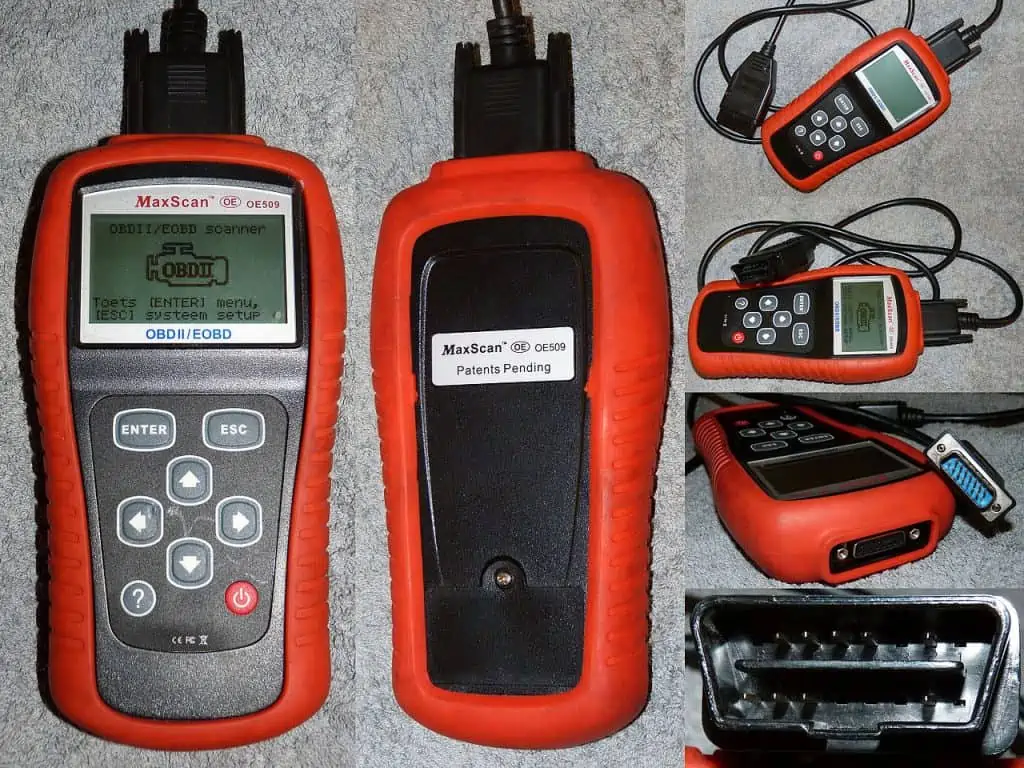
Spray some starting fluid around any potential trouble spots. Make careful to spray the gasket on the intake manifold. You can get in touch with your mechanic if you lack the confidence to accomplish this.
When you spray on a certain region, if your engine revs, there probably is a vacuum leak there. You must stop the leak. You must proceed to the compression test if you determine that the vacuum leak is not the root of the problem.
5. Test of Compression
To do a compression test, you will require a special tool. I suggest purchasing the Innova 3612 compression tool. You may also use a compression tool for this test if you already have one. There are more durable and pricey instruments available.
You don’t need to spend a lot of money to use the Innova 3612 if you don’t make many engine repairs. The Innova 3612 is reasonably priced and compatible with practically all makes and models of vehicles.
It has a variety of fittings that allow it to attach to any spark plug tube. The first step in doing this compression test is to remove the spark plugs from the cylinders that aren’t firing properly.
The spark plug tubes should be connected to the compression tester hose. Make that the opposite end of the line is attached to the compression tester. The next step is to unhook your ignition coil so that it won’t start firing while the test is being done.
While you read the gauge, have a helper turn the ignition for about 10 seconds. Note the readings in writing. Fill the spark plug tubes with a drop of engine oil. The oil container’s cap may be poured in half.
Return the ignition key while reconnecting the compression testing kit. Also note this reading down. The second exam should have a greater score than the first. Now you have to repeat this procedure with the other good-functioning cylinders.
It’s a good sign that you have low compression if you notice that one or more of your cylinders are lower than the others. Workout cylinder walls or faulty piston rings may be to blame for the misfire if low compression is the cause.
Unfortunately, there is no quick or inexpensive cure for this. If you want to keep the vehicle, the engine has to be rebuilt or replaced. There is one more item you need to check to identify the root of your engine misfire if all the tests performed thus far, including the compression test, come up positive.
6. Look Into Gasoline Delivery
Please be aware that if you have cylinder misfiring on all cylinders, low fuel pressure is probably the cause. Make sure the fuel regulator is properly set if that is the situation. Make sure your filter is not blocked. In addition, make sure you repair any broken parts and check that your fuel pump is exporting gasoline at the required PSI.
But if you take all the above-mentioned precautions and still only have one or two good cylinders, you most likely have a bad fuel injector. First, make sure that the aforementioned injector is receiving electricity. A voltmeter can be used to do this. You must make a professional support contact if the ignition isn’t working.
If the injector receives power, you must test it using the same method you used to test the spark plugs and ignition coils. Check to see whether the misfire will move to the new cylinder by switching the ignition coil. If it does, your fuel injector is faulty. Please swap it out with a new one.
The car manifold gasket by Gmaxwell / GFDL 1.2. If you drive a more modern model of car, it may be worthwhile to check for any more leaks at the intake manifold gasket or the intake while diagnosing engine misfire.
What are the Main Causes of an Engine Cylinder Misfire
In addition to the misfiring engine reasons we discussed above, I will give you an overview of what causes cylinder misfires in a gasoline engine. Even if some of these causes may appear typical, you must be on the lookout for them. The misfire may be brought on by a simple fix.
1. Ineffective Valve Cover Seals
Poor valve cover seals are another cause of a misfire. Engine oil leaking into a spark plug tube as a consequence of a poor or weak seal will result in a misfire. It’s necessary to remove the oil from the plug tubes and swap out the worn-out seals.
You must remove the spark plugs before using a suction tool to remove the oil from the tubes and clean the oil. Take a large screwdriver and a clean rag and go into the spark plug tubes to clean the oil (the suction tool will only work if there is too much oil inside the tubes). This must be completed one at a time.
2. Gasoline Lines with Water
There’s a good risk that water in the fuel line will enter the combustion chamber and result in a misfire.
3. Faulty PCV Valve
A faulty PCV valve might result in a vacuum leak, which will lead to cylinder misfiring.
4. The Spark Plug Tubes with Water
Although it’s uncommon, there’s a chance that water got into places it wasn’t supposed to if you recently had your vehicle steam cleaned. The spark plug tubes are a nice illustration. It won’t just result in a misfire; it can also harm your ignition coils.
Spark Plugs and Engine Misfire
There won’t be anything to ignite the gasoline in the combustion chamber if the spark plugs aren’t working. A combustion engine’s spark plugs are a crucial component.
Spark plugs work by transferring an electrical signal from a distributor or ignition coil at a specified moment to produce sparks that ignite the air-fuel combination in the combustion chamber.
With a defined spark plug gap set by manufacturers during installation, each vehicle needs a distinct set of spark plugs. Poor spark plugs may not light at all, whereas good spark plugs will ignite quickly.
To keep your engine operating smoothly, spark plugs need to be maintained and replaced, much like air filters, fuel filters, and motor oil.
However, some newer SUVs and trucks with better ignition systems do not require new spark plugs. Spark plugs will occasionally exhibit evidence of wear or failure, despite what auto manufacturers may claim or warranty.
Therefore, your car’s performance will be significantly impacted when your spark plugs become faulty. Watch out for the following indications if you’re wondering how to determine whether the spark plug is misfiring.
When one or more cylinders are not firing properly, the engine will go out of balance, which might cause strong vibrations within your cabin when accelerating or idling.
- Sluggish acceleration
- Bad fuel economy
- Misfiring engine
- Difficulty in starting
What are the Common Symptoms of a Car Engine Misfires?
Rough acceleration or rough idle are the most typical signs of engine misfires. Poor engine performance and a check engine light are two further indicators you can see. The check engine light may be glowing when the misfires are happening, too.
Although not all of them, these are the most typical symptoms. The top signs of engine misfires are listed in further detail below:
1. Unsteady Acceleration
Additionally, a misfiring engine may result in a jerky acceleration in your vehicle. You can feel jerking and surging when driving as the engine revs increase during acceleration. The easiest method to identify an engine misfire is when it occurs when you are accelerating. You can experience a small or powerful shock from the engine when a misfire happens.
These misfires do frequently occur when the engine is under strain, such as when you are driving quickly. Misfires are most frequently observed while in high gears, low RPM, and with the accelerator down. A common indication that your engine is misfiring is jerky acceleration.
2. Rugged Idle
On occasion, the engine can misfire while it is idle as well; your engine sensors will receive incorrect readings, and the air-fuel mixture will be off. This may result in a very unsteady idle that jumps up and down, and the engine may even cut off while idle.
Even while a triggered check light might not immediately bring to mind a misfire, difficult idling is one telltale indicator of one. A harsh idle might happen for a variety of reasons.
It could be caused by defective spark plugs, vacuum leaks, clogged fuel filters, or an engine that is running low. If the lean running engine is the source of the harsh idling, it might seriously harm the engine.
This is often one of the first locations you see misfires since the vehicle engine is most susceptible to minor air-fuel mixture issues when it is idling.
3. Abnormal Vibrations
When a vehicle engine is produced, it is carefully balanced and frequently uses balance axles and other techniques to produce as little vibration as possible.
To guarantee you have a balanced engine, auto manufacturers go through pricey procedures. That equilibrium is lost when you misfire. While accelerating or idling, you’ll feel your vehicle vibrate.
You may check the vibration in your vehicle by opening the hood if it is parked on level ground. Depending on how many cylinders in the engine are misfiring, the vibration gets worse.
The engine will fall out of balance when one or more cylinders are not firing properly, and this might result in severe vibrations within your cabin during acceleration or at idling.
4. The Check Engine Light Illuminates
All the many engine sensors in modern vehicles are very well monitored. The information will be sent to the engine control unit if one sensor malfunctions or detects that something is not quite right with the engine.
The car engine combustion spark plugs by Gzuckier / CC BY-SA 3.0. A misfire will occur if engine oil seeps into a spark plug tube as a result of a shoddy or weak seal. The plug tubes must be cleared of oil, and the worn-out seals must be replaced.
The engine control unit will determine if the issue is severe or not after receiving the data. The engine control unit will turn on the check engine light to let you know anything is wrong if the issue recurs frequently so you can have it fixed.
The engine light frequently illuminates and a fault code is frequently stored on the cylinder where the engine misfires when the ECU detects misfires. Utilize a diagnostic scanner to check the error codes.
5. Car Experiences Slow Acceleration
Misfires can result in the O2 sensors receiving inaccurate data, as we previously described, and producing a mixture that is either too rich or too thin.
Your air-fuel mixture ratio will be affected by a misfiring engine. When this occurs, it will communicate erroneous information to other components. The oxygen sensor is one of these parts. The auto computer will limit acceleration if the oxygen sensors transmit inaccurate data as a result of the improper air-fuel ratio.
In vehicles equipped with turbochargers, this symptom will be more obvious. The engine won’t get the necessary air or boost, which will make driving unpleasant.
Overly lean or rich mixes will reduce acceleration and possibly put your car into limp mode, which will prevent it from revving over 3500 rpm and turn off the turbocharger’s boost pressure.
6. The Sound of the Engine Becomes Abnormal
It could be difficult for you to recognize this sign if you are not an automotive engineer with practical knowledge. The fact is that various engines have distinct noises. V8 engines have a distinctive sound from V6 or 4-cylinder engines.
During misfiring, one or more cylinders may completely cease functioning, turning your four-cylinder engine into a three or two-cylinder one. An engine misfire sound is typically only audible to those with educated ears.
A significant misfire will be indicated by a distinct engine sound produced when one or more cylinders are lost. Additionally, this will cause a gradual acceleration. A loss of two cylinders in a V8 engine results in a 25% reduction in engine power.
In contrast, a four-cylinder engine will lose 50% of its power if two of its cylinders are lost. A 4-cylinder engine makes it easier to locate a dead cylinder after a misfire than a V8 engine.
Which are the Common Reasons for Engine Misfire?
A faulty ignition coil or spark plug is the most typical reason for misfires. Additionally, gasoline-related problems such as a defective fuel pump or fuel injector may be to blame. Rarely, it may also occur as a result of low engine compression.
The most frequent reasons I have discovered throughout the years of dealing with vehicles are listed in greater detail below. Let’s start with the most typical explanation:
1. Defective Ignition Coil or Distributor If You Own an Old Car
The ignition coil is the most typical source of misfires. While some vehicles have a single coil with a sparking cable to each spark plug, others have a separate ignition coil on each spark plug.
In rare circumstances, older vehicles might feature an ignition coil in addition to the distributor. Unplug each coil if your spark plugs are separated to see if you can identify which cylinders are not firing.
The ”Check Engine Light” by Wikiuser100000 / CC BY-SA 3.0. If the misfire occurs repeatedly, the engine control unit will illuminate the check engine light to alert you to any problems so you can get them rectified.
Normally, the ignition coil, distributor, or both should be checked first when you believe your engine is misfiring. Spark plugs are ignited by distributors in older autos. There are delicate touch areas inside the distributors. If any of these components were to corrode, wear out, or be damaged, an engine misfire may result.
Some vintage vehicles have both distributor and ignition coils in addition to the distributor. When the coils malfunction, the spark plugs or distributor won’t receive the necessary voltage, which causes a misfire.
To prevent serious cylinder misfiring, you must replace the ignition coil and distributors if a thorough examination reveals that they are far beyond their prime. The majority of more recent vehicles just have ignition coils.
If an ignition coil is found to be defective or if a trouble code has been saved for an ignition coil, replace it.
2. Faulty Spark Plugs
Bad spark plugs are the second most prevalent reason for a misfire. Your cylinders are fired up by the spark plugs, which over time may get worn. Spark plug replacement is often simple and inexpensive.
One of the most frequent reasons for a cylinder misfire is a bad spark plug. Remember that the spark that ignites a little explosion that moves the piston up and down in the cylinder walls is produced by the spark plug.
Any spark plug that is not working properly or at all might leave too much fuel in the combustion chamber, which would cause an engine to misfire at low rpm.
Spark plugs should be one of the first things you check when you encounter a misfire since they can deteriorate or wear out over time. Given how inexpensive and simple it is to replace them, you should always hope that they are the problem.
It’s probably time to change your spark plugs if you can’t recall the last time you did it. Check out this page on spark plug symptoms if you want to learn more about them.
3. Leaks In the Intake Manifold Gasket
When it comes to the spark plugs, intake leaks near the cylinder heads are also fairly typical. Older vehicles without steel intake gaskets had a lot more trouble with this issue.
One of the frequent reasons for engine misfiring is vacuum leakage. Additionally, you should check your intake manifold. The intake manifold is a great spot to start a vacuum leak test. I’ll demonstrate how visually appealing and reasonably priced it is to identify a vacuum leak after I show you how long the passages in this text are.
So you might want to check this if your engine is older. It is probably worthwhile to look for any other leaks at the intake manifold gasket or the intake if you drive a more recent model of vehicle. Inspect your vacuum hoses for damage.
4. Reduced Fuel Pressure
A bad fuel pressure regulator, a bad fuel pump, or a blocked fuel filter can all contribute to low fuel pressure. Your engine will run lean and experience misfires on all cylinders as a result of low fuel pressure.
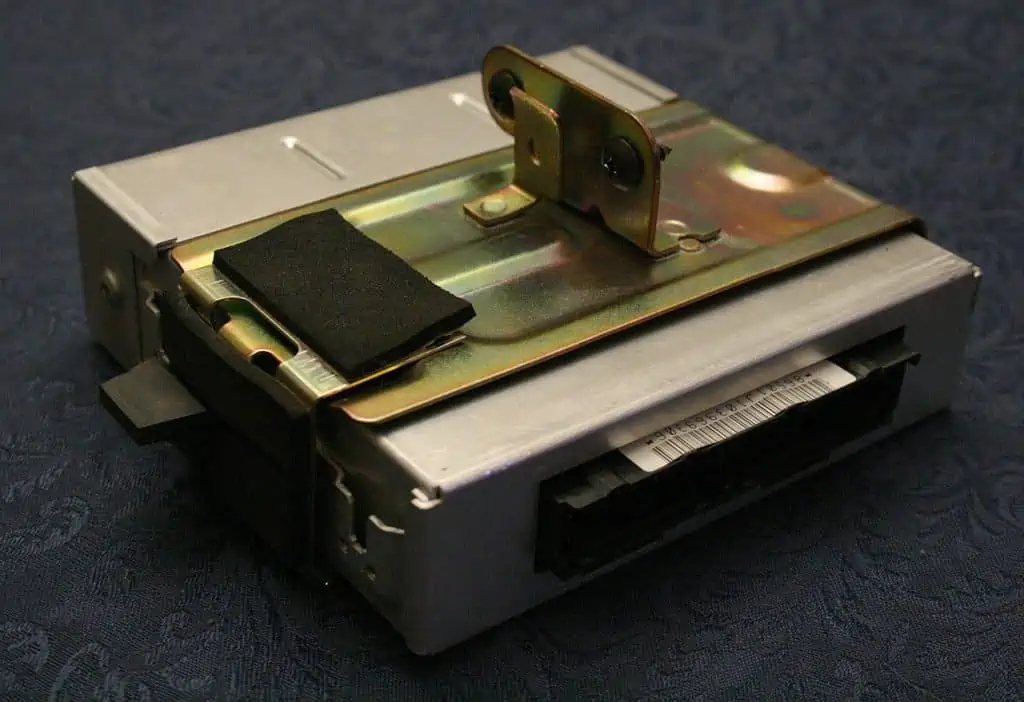
Low fuel pressure causes an engine to run lean because not enough fuel is going into the cylinder. A misfire will result from that lean fuel combination.
Many things could be to blame. The fuel regulator is a great place to start ( if your vehicle is equipped with one). An ineffective or broken fuel pressure regulator will prevent enough fuel pressure from passing.
Your gasoline filter is a different area that needs your attention. To increase the lifespan of the fuel injectors and carburetors, the majority of cars come with a single fuel filter that filters fuel entering the gas tank.
Some vehicles feature an additional filter (making them two filters). Low fuel pressure will result if these filters become clogged with debris and filth that they have been denying access to pass through.
A damaged fuel pump might result in auto misfires during acceleration or while the engine is running hot. You probably have fuel pump problems if you diagnose your vehicle and get codes for all cylinder misfiring or random misfiring.
Check your fuel pressure if you have trouble codes for misfires on all cylinders. More information on the reasons for low fuel pressure can be found in this article: Low fuel pressure is to blame.
5. An Injector Issue
Injector difficulties are an additional issue that was more prevalent five years ago. Your engine will misfire if a fuel injector is malfunctioning, and these can be quite challenging to identify without flow testing.
A poor or “stock-tight” fuel injector may provide the combustion chamber with little to no fuel. Soon, we’ll go through how to identify and swap out subpar fuel injectors.
On newer cars, injector issues are less frequent, so you should first rule out other potential causes, but it is still worthwhile to check.
6. Engine Damage or Low Compression
Low compression is another frequent cause of engine misfiring that you should investigate. Low compression, however, could be caused by numerous circumstances. The timing of the engine should be checked first.
Compression and timing problems are frequently caused by a faulty timing belt. You must first confirm the timing. Using a timing light is the simplest approach to check the timing.
To locate a timing indicator on your main engine pulley, you must understand how to operate a timing light. If your car uses a distributor, you can change the ignition points and timing by turning the distributor.
Low compression, which results in misfires, could also be brought on by an incorrect timing belt adjustment. If you are aware that the timing belt has recently been replaced, you should verify that it was put properly.
7. Incorrect Air-Fuel Blending
A bad air-fuel combination can occasionally result in misfires. Your car’s MAF sensor, O2 sensor, coolant temperature sensor, and other sensors can all result in an incorrect air-fuel combination.
Car Ignition Coil by Aceonhost / CC BY-SA 4.0. When attempting to fix an engine misfire, Replace an ignition coil if it is discovered to be faulty or if a trouble code has been stored for it.
Preventing Engine Misfire
- Attending the periodic maintenance recommended in your owner’s manual is one of the most reliable strategies to prevent cylinder misfires.
- Make sure your engine is tuned according to factory requirements. A yearly examination will assist in identifying any infant issues that might have caused a misfire.
- After refueling, always be sure you torque down your gas cover. This will lessen the chance of EVAP system issues.
- To assist prevent system line corrosion, use enough rust prevention.
- Any caution light that is on should always be taken seriously. If you ignore it, a minor problem could become a significant one.
- When it comes to keeping your car healthy and safe, don’t be penny-wise and pound-foolish.
- As advised in your owner’s manual, schedule system maintenance, and maintenance tune-ups to keep your engine in top shape. It is a surefire method of preventing early system failures.
- Every 30,000 miles, make sure you perform expert fuel system maintenance. This will ward off carbon buildups, the EGR system’s worst enemy.
How Much Does an Engine Misfire Repair Cost?
A misfiring engine can be expensive to repair depending on many variables. It depends on the make and model of your car as well as what caused the misfire. However, you need to budget $70-$100 for diagnostics to identify the problem’s true cause and extract the error codes.
Spark plug replacement is the most frequent repair and costs $200 to $300 for a 4-cylinder engine. V6 and V8 engines should cost between $400 and $500.
How Long Is a Misfiring Engine Safe to Operate?
The severity and origin of the misfire must be considered. However, a misfiring engine can typically keep most cars running for 40,000–50,000 miles. I’m sure you wouldn’t want to put yourself through this much stress over a misfiring engine.
To prevent severe engine damage, I advise you to identify and treat cylinder misfires as soon as you observe any symptoms.
The Conclusion
You have seen many potential causes for engine misfiring; typically, cylinder problems are to blame. However, you have also seen many simple procedures for identifying and resolving misfire problems.
As you switch the ignition coils, wires, and spark plugs, it’s important to pay attention and listen carefully. Your best option is to seek professional assistance if you lack the confidence necessary to identify and resolve engine misfiring problems on your own.
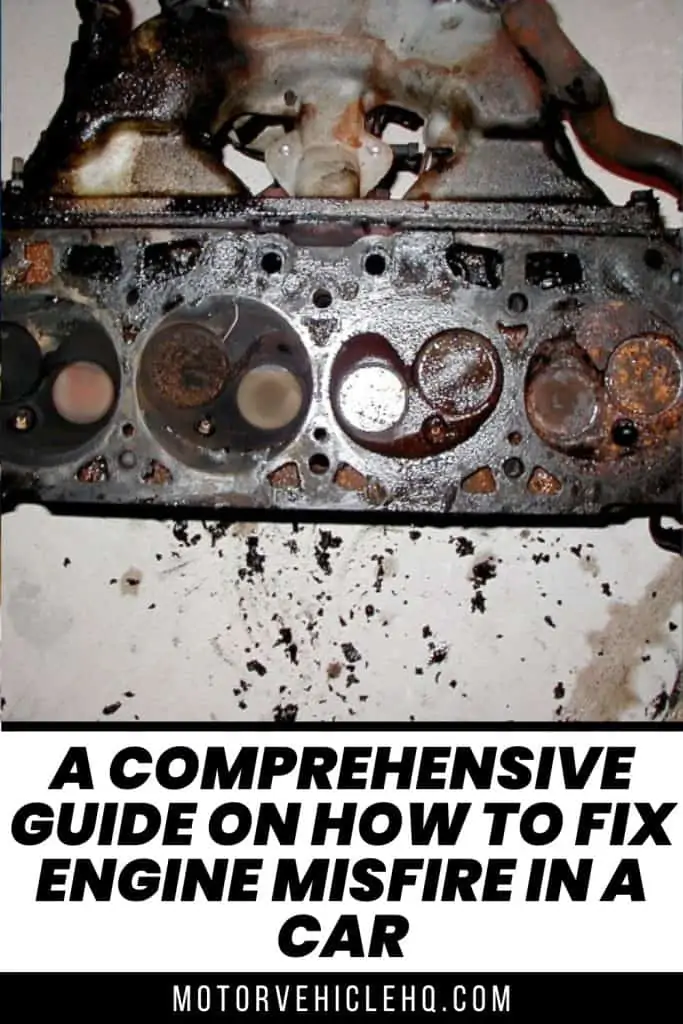
The car manifold gasket by Gmaxwell / GFDL 1.2.

Jim Wicks is the founder of MotorVehicleHQ. With over two decades of experience in the automotive industry and a degree in Automotive Technology, Jim is a certified car expert who has worked in various roles ranging from a mechanic, car dealership manager, to a racing car driver. He has owned more than 20 cars over the past 15 years. Ask him about any vehicle you see on the road and he can tell you the make, model and year. He loves the aesthetics of all things cars, and keeps his vehicles in pristine condition.
In his free time, Jim enjoys getting his hands dirty under the hood of a classic car or taking long drives along the country roads. His favorite car? A 1967 Shelby GT500, a true classic that, according to Jim, “represents the pure essence of American muscle.”

